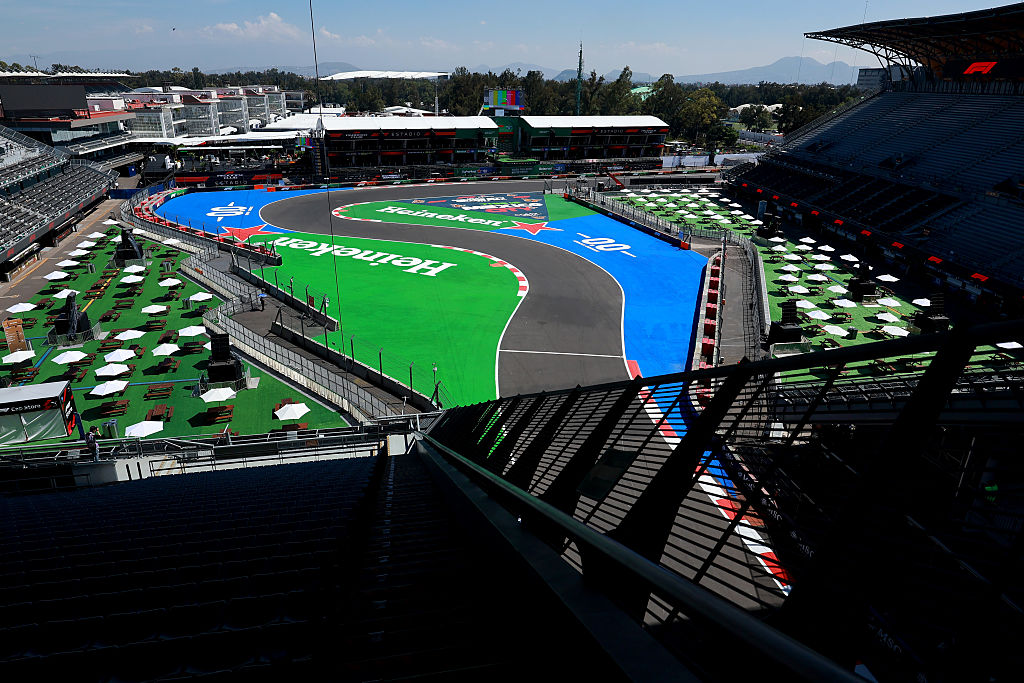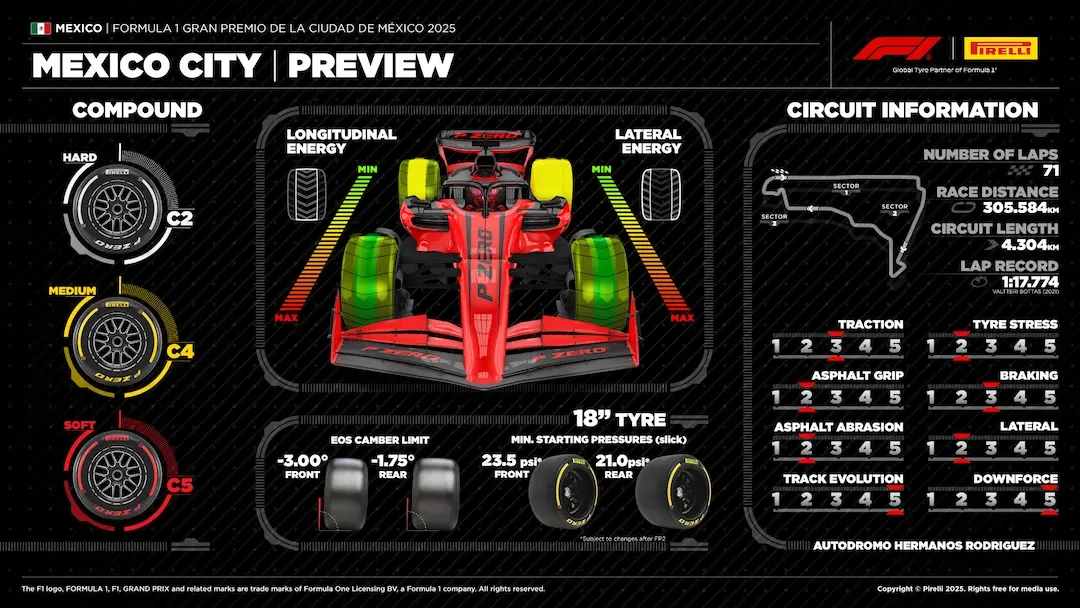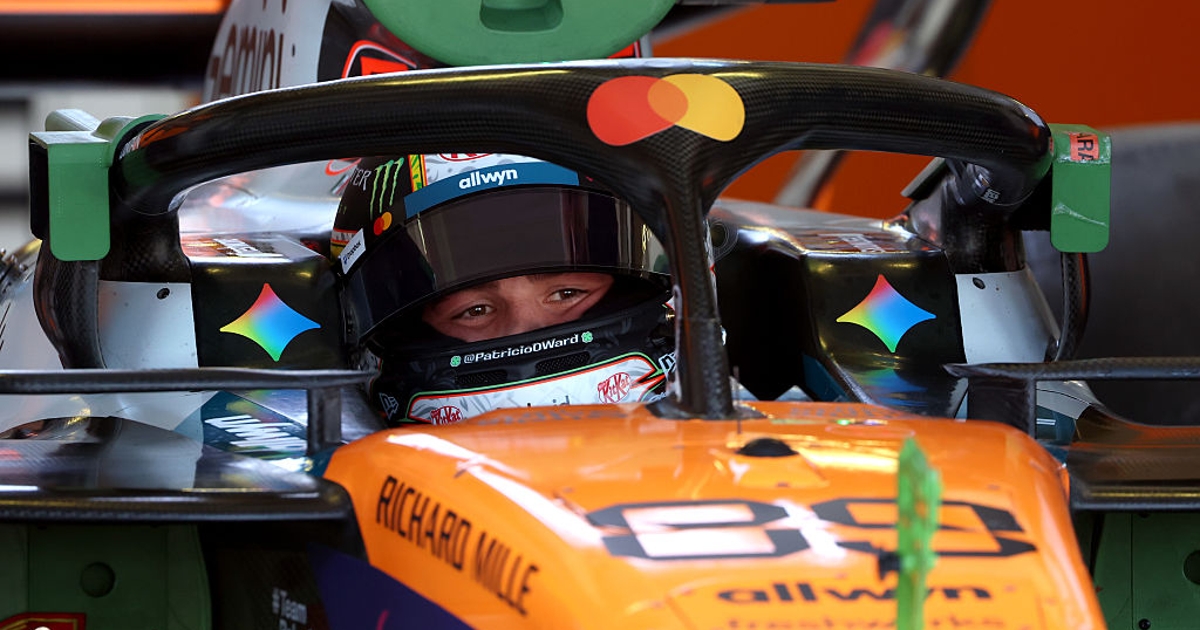Back-to-back races in Austin and Mexico City provide two special venues with large crowds, but the tracks could not be more different in character. At over 7,200 feet above sea level, the Autodromo Hermanos Rodríguez is a unique test and our guide to this weekend’s challenge will be local hero Pato O’Ward, who will once again be competing in FP1 for McLaren.
“The main thing is that the overall downforce of the car is much lower, so it won’t feel like the car has the same amount of grip as usual. I think the top speed will also be very high because the air is not as thick. Cooling will be an issue due to the altitude, so the engine will struggle to breathe a little more.”
“But as for the track, it’s a lot of slow, tight and twisty stuff, with some very heavy braking zones and one very fast sector.
“For me, coming from an IndyCar background, it still feels very fast. For me, it doesn’t feel overwhelming. No, it’s still quite the opposite. It still feels like it can do a lot more than what I’m used to. But it’s a really nice track.”
“I just want to say to our fans, this is a song where we can really thank everyone for coming, because every section has its own character. Everyone is so lively and excited to be here. When we finish the session and we get to the stadium section, we’ll definitely wave because this is something very special.”
“As far as the important sections go, Turns 7 to 11 are very tricky because you have to trust the car. You have to go into it and trust that the car will do it. But as we’ve seen, if you’re greedy it’s an area where the car will bite you. So I would say it’s a section where it’s very easy to make or break a lap.

Slow, winding corners encourage aggression, but O’Ward warns that the hand is prone to overplay. Hector Vivas/Getty Images
“After that section is the super slow stadium section, Foro Sol. It invites you to push harder and the grips aren’t there to do that. So I think that’s probably the worst part of breaking a lap, because if you do everything right and you screw up there, well, it’s not going to be good. And that’s in front of so many fans!
“I wouldn’t say the conditions in FP1 are particularly tough. Obviously, the rubber wears out over the weekend. But the weight and fuel load also make a huge improvement in lap times.”
“Because FP1, at least for us, is not light fuel at all, and we often become more conservative in our explorations. But as soon as you start reducing the fuel level and start putting more power into the engine, I think the lap times come automatically. I wouldn’t say the grip itself at low speeds is like a night-and-day difference.
“In terms of set-up, if you’re running very hard, it’s about how far you can go before the car starts to vibrate too aggressively. I think it’s a fine line as to how low you want to go. Are you dragging it too much on the straights? Because the straights are so long.
“So I think there’s definitely a fine line between just going as low as you can and pushing. There’s definitely a scenario where that’s too much. So we’ll have to try that in P1 and that’s going to be my job.”
“In fact, it’s not necessarily the most downforce, so obviously it’s not going to be like Monza. I don’t know exactly what specs I’m using or have used at other circuits, but I know I’m trying different things to Oscar (Piastri) in terms of downforce, so we’ll see where that takes us.”
At a glance
Race distance: 71 laps/189.9 miles
2024 pole time: 1 minute 15.946 seconds (Carlos Sainz, Ferrari)
2024 winner: Carlos Sainz, Ferrari
Pirelli tire assignment: As was the case in Austin last weekend, the compound selection varied widely in the Mexico round between the most difficult of the three and the medium. As in 2024, medium and soft will be C4 and C5 respectively, but hard will be C2. At the Mexico City track, this compound is a very conservative choice and makes a huge difference in terms of lap times compared to the other two, but it also offers less grip.
Last year, the soft was only used in qualifying and races, with the sole purpose of securing extra points for setting the fastest lap of the race, but the scenario could change significantly in the future. In fact, the advantages gained from C4 and C5 may lead teams to primarily aim to race on these compounds. However, there is a risk that degradation may require a second pit stop. Anyone who chooses the C2 will be able to manage long stints with one stop on the way to the checkered flag in relative comfort, albeit at the expense of performance.
The use of the two softest compounds will certainly be carefully evaluated during the three free practice sessions, where teams can run long stints fully loaded with fuel and check the condition of their tires. Historically in Mexico, grain levels are very noticeable because the air is thinner at high altitudes, reducing the amount of aerodynamic downforce a car can generate.
On tracks that already have little grip due to limited use, tires tend to slip, causing graining. It will also be interesting to see if the greater resistance to this phenomenon offered by current compounds will help limit it and therefore benefit tire management gurus.

Mexico City Grand Prix Weekend Schedule (all Eastern Time):
Friday, October 24th
2:25pm – 3:30pm – Free Practice 1, ESPNU
5:55pm – 7pm – Free Practice 2, ESP News
Saturday, October 25th
1:25pm – 2:30pm – Free Practice 3, ESPNews
4:55pm – 6pm – Qualifying, ESP News
Sunday, October 26th
4pm-6pm – Mexico City Grand Prix (71 laps or 120 minutes), ABC



